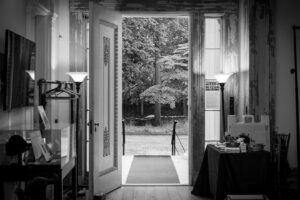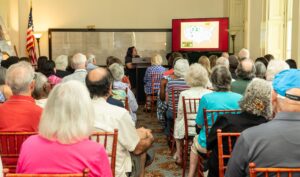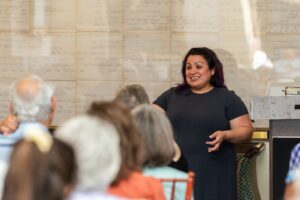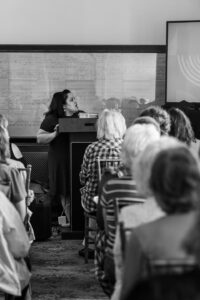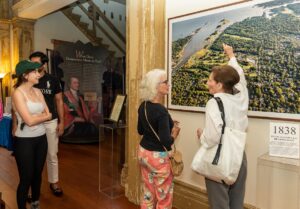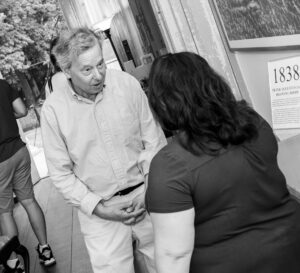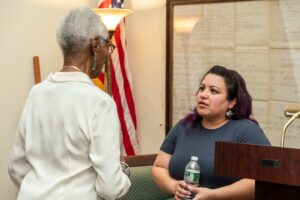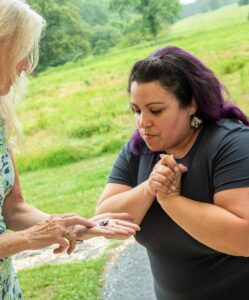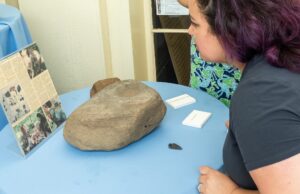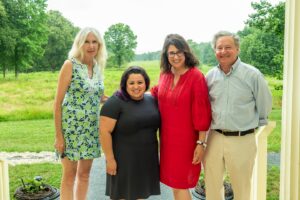The topic of New York State’s original heritage drew a huge audience of over 95 people. The audience was fully engaged by historian Heather Breugl’s presentation which traced how the populations of Indigenous Peoples in America – and more specifically the Native Tribes of New York including the the Muh he con ne ok, The Peoples of the Waters that are Never Still, the Lenape, the Original People, the Haudenosaunee, The People of the Longhouse, and the Shinnecock of Long Island – had changed over the centuries due to removal from their homes. The audience gasped at the numbers, as Heather detailed how the Indigenous population had plummeted from a high of an estimated 10 million in 1300 to a staggering low of 237, 196 in 1900. Fortunately, the population has regained strength and was estimated in 2021 to be 6.79 million.
Using maps and slides to give an overview of the original Native Nations that inhabited New York, Heather described how the American Revolution had impacted relations between the colonists and groups like the Iroquois Confederacy and eventually led to reservations and forced movements of people from their ancestral homes. As a citizen of the Oneida Nation of Wisconsin and first-line descendant Stockbridge Munsee, Heather was able to share her own research and knowledge about efforts to restore Indigenous sovereignty and shared updates about modern collective liberation campaigns for reparation and inclusivity like the Land Back movement.
Refreshments were served after the talk on the veranda and everyone looked at cultural items found at the Jay Estate during the State Environmental Quality Review Act (SEQR) process. The original New Yorkers who were stewards of what we call the Jay Estate today were a Mohican tribe known as Wiechquaesgeck who spoke Algonkian – they called the land overlooking Long Island Sound Apawamis. It wasn’t until November 12, 1661 that Chiefs Shanorock, Rawmaquae, Rackeatte, Pawwaytaliau, Mawmatoe, and Howinse signed a deed that rendered possession of their land to an English Quaker named John Budd.
Photos by Kim Crichlow

